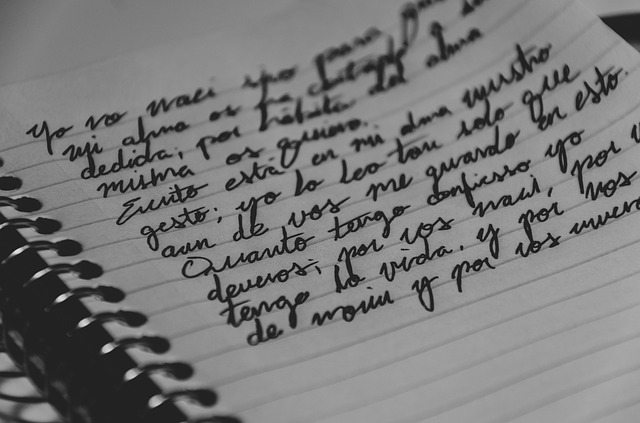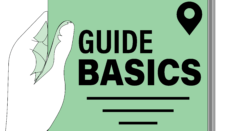Who doesn’t like good music? It’s hard to find someone who doesn’t cringe when they hear the lyrics to a certain song. In general, there is always one that evokes memories, be they sad or happy, good or bad.

What makes us like something is that we feel identified with it. Just as a mirror shows the image of what is in front of it, the things we feel comfortable with show a part of who we are, and this is what happens in the case of songs.
Although it is true that, in this age, opinions on what is considered art vary widely, some songs have such emotional lyrics that some might claim that it is a poem.
However, have you ever stopped to think what a poem is? You may think you have mastered its meaning. However, after reading a little on the subject, we may realize that we were wrong and that there is more that we do not know.
In general, we usually associate poems with love. For this reason, we find them romantic. But the truth is that you can write a poem about almost anything, even about death, something that doesn’t seem to be beautiful or pleasant.
If you started reading this article, it is because you want to be more familiar with this subject, because you would like to understand all that it implies, and perhaps because you have the desire to learn how to write a good poem. If that’s the case, you’ve come to the right place, since running requires learning to walk. Which is to say, if you want to be a poet, you can’t miss the theoretical part that’s involved. Therefore, continue this reading.
Instructions
A poem is nothing more than a literary composition, which is written in verses, which, in turn, are divided into stanzas. In ancient times, any writing of literary origin was considered a poem. However, today there is a different conception of the term.
Rhythm is achieved by repeating sounds at the end of each verse. This is how the poems rhyme. They are usually written in the present or past tense. Which means that we can know and understand the feelings and experiences that led its author to write the poem, no matter what the subject.
Among its main characteristics we find that they do not present a direct narrative. That is, although the author can tell a story through a poem, it will not be transmitted directly by telling the events. The message will be conveyed through verses and will allude to various elements of the story such as location, time, and characters.
On the other hand, as we have already pointed out, the poem conveys the author’s emotions. No matter what the topic is, it is difficult for it not to be related to the emotions of its author. Since there are different personal reasons that led me to write it.
Another characteristic of the poem is the use of rhetorical or literary figures, which help to express the ideas, emotions or the story that is intended to be told. Since it is not written in common language, its true message can be hidden and it is interpreted freely and openly, so there can be more than one correct interpretation. In addition, the use of literary figures also has an aesthetic purpose.
A poem is a literary product, which, due to its characteristics, is considered as part of the poetry genre. Among the main parts that make it up, we find the following:
The stanza
It is composed of a series of verses with the same characteristics, which are repeated throughout the poem. Some stanzas are defined by the rhyme, by the meter or by the type and number of verses used. That is, if the verses are made with the same number of syllables, they are known as isometric or isosyllabic stanzas.
Depending on the number of verses, we can find the following stanzas: couplets, triplets, quatrains, redondillas, cuaderna vía, liras, quintets, quintillas, composed seguidillas, major art couplets, leaflets, ovillejo, among others.
The verses
They are a set of words, which are subject to different measures and rhythms. They are made up of a series of short sentences that are written by lines and are classified, according to the number of syllables, in minor art verses. That is, disyllables, trisyllables, tetrasyllables, pentasyllables, hexasyllables, heptasyllables, and eight syllables.
There are also verses of major art, which are made up of 9 syllables or more, and are the eneasyllables, decasyllables, hendecasyllables, dodecasyllables, tridecasyllables, and the alejandrinos. When a verse is made up of eleven syllables, it is considered to be composed of two simple verses separated by a censor. Each of these simple verses are called a hemistich.
Rhythm
It is the musicality that the verse possesses. It is given based on the regularity of the accents. As is natural, in the verses there are syllables that have a greater intensity in the voice, which is similar to the rhythm that is appreciated in music. So, in the verses there are syllables that have a greater intensity than others.
Depending on the way the accents are distributed, the rhythm can be divided in three ways:
- The binary rhythm: which is marked in the accent every two verses.
- The tertiary rhythm: which is marked every three times in the accent.
- The quaternary rhythm: as its name indicates, it is the one that is marked in the accent every four verses.
The accent on the rhythm is of the utmost importance, since the author uses it so that the word can stand out and thus attract the attention of the person who reads it.
The rhyme
This is a technique that is used in poetry, which consists of repeating sounds, which usually end in verse starting from the last accented vowel. We can find two types of rhymes, the first one is the consonant. This occurs when the sounds are repeated, exactly, both in vowels and in consonants, after the last accented vowel.
On the other hand, there are assonance rhymes , which are produced when the sounds are repeated only in the vowels.
Measure
It is about the number of syllables that make up each of the verses, as well as the stanza scheme. This makes it considered the first formal element of a poem. In order to carry out this measure correctly, aspects such as:
- The law of the final accent: refers to the accent of the last word of the verse and that serves to determine the number of syllables that make it up. If the last word of the verse is acute, a syllable is added to the verse. If it is serious, the verse does not undergo modification. But, if it is esdrújula, a syllable is subtracted from the verse.
- The signal: it is used to determine and make the different adjustments in the metric of the verse. It is based on the pronunciation with a single blow of the voice, the last syllable of a word, as long as it ends in a vowel without an accent, and the first of the following one, if it begins in the same way, that is, with a vowel without an accent. accent.
- The hiatus: it is a poetic license with an opposite effect to that of the sinalefa. It occurs when one or both vowels involved have a prosodic accent or find between them a comma, a semicolon, a full stop, an ellipsis or the censorship of a composed verse coincides there.
- The umlaut: is the pronunciation of the vowels of a diphthong in different syllables. It is about the poetic license that undoes a diphthong when you want to get one more syllable in the verse. This, with the purpose of making the metric more harmonious.
- The syneresis: it is a phenomenon opposite to the umlaut. It is about the pronunciation, in a single syllable, of the vowels that form a hiatus. It is done with the purpose of subtracting a syllable from the verse to achieve a more harmonic metric.
Tips
There are several types of poems, some of them are:
- The sonnet: it has 14 hendecasyllabic verses, which are structured in a classical way. In general, they are distributed in 4 stanzas, 2 of four verses and 2 of three verses.
- The triplet: it is a stanza that is formed by three lines of verses with a rhyme between the first and the third line. Generally, they are 11 syllables each. When several triplets are used to create a longer poem, it is known as a chained triplet, as long as the line, which is free at the beginning, is used to rhyme with the third that follows.
- Romance: it is made up of a series of eight-syllable verses, which have an assonant rhyme in the even verses, while the odd ones are free or loose.
- The tenth: they are nothing more than stanzas that are made up of 10 verses of 8 syllables each and that have a consonant rhyme. Depending on its construction and the combination of rhymes, there are Italian, spinel and French tenths.
- The ode: it is a poetic composition of the lyrical genre that develops in different tones and forms. In addition, it covers issues of any topic and is divided into stanzas or equal parts. Its main function is to express feelings.
- The acrostic: these verses are formed with the affiliation of a word. That is, when each verse begins with the first letter with which the word is formed.
- The couplet: it is a poetic work that is composed of four eight-syllable verses. In the case of the even verses, they have an assonance rhyme, while the odd ones have no rhyme. Currently, we can find couplets of major art, Manriqueña, minor art, royal art, broken foot, among others.
- The eclogue: it is very similar to the script that is handled in a play. His focus is towards the shepherds and he has a great connection with nature. However, they can also be written to refer to love and other feelings.
- The epigram: they are short compositions with satirical content. In fact, short love poems have a tone of black humor, since irony is what characterizes it.
- The epitaph: it is a composition that is used with the intention of honoring the deceased and is written on the tombstones.
There are other types of poems such as hymns, proverbs, poetic prose, and even haiku, a type of Japanese poetry. Which of them would you like to delve into?
